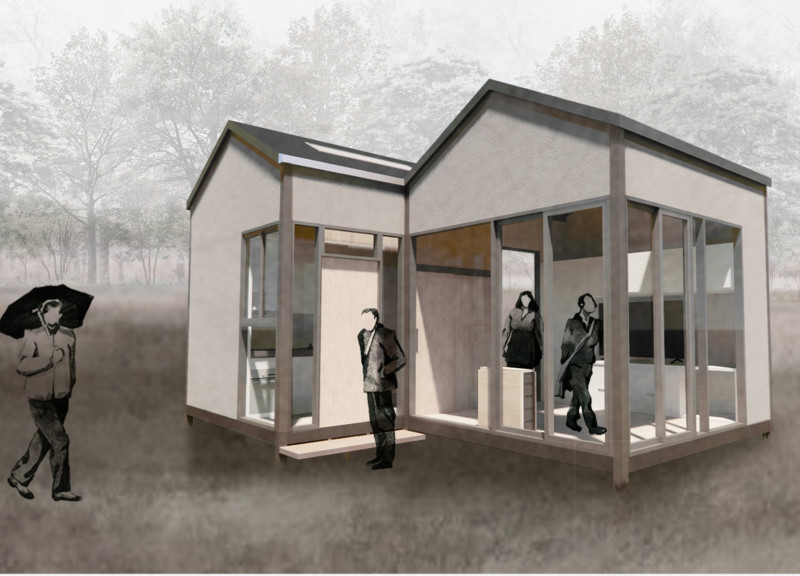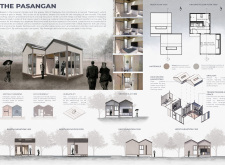5 key facts about this project
The Pasangan microhome is located in the tropical climate and grassy hills of Malaysia. It serves as a compact living space designed to meet the needs of its residents while addressing the challenges of limited space. The home reflects the concept of pairing, as suggested by its name, "Pasangan," which means "pair" in Malay. This idea is expressed through the integration of two distinct living areas, focusing on flexibility and comfort.
Design Concept
The shape of The Pasangan merges two homes into one design, symbolizing unity while allowing for individual privacy. Inside, clear separations exist between fixed and movable spaces. Essential areas like the kitchen and bathroom remain consistent to simplify usage, while the living and sleeping spaces are open to change. Residents can rearrange furniture to create different layouts that fit their daily activities, promoting an adaptable lifestyle.
Materials and Construction
The structure uses steel for the roof, columns, and beams, providing a strong framework that can endure heavy rain. Concrete is also part of the design, ensuring the home withstands the extreme weather common in the area. Inside, wood is used for the walls, adding a sense of warmth and making the space feel more inviting. These materials together create a durable and comfortable living environment.
Sustainability Features
Sustainable practices are important in the design of The Pasangan. Rainwater is harvested to manage water resources more efficiently. This water can be recycled for toilet flushing, reducing waste. The design includes large windows and skylights, allowing natural light to brighten the interior without relying heavily on electricity. These elements work together to foster a more eco-friendly approach to living.
Transformable Spaces
The flexibility of the living areas is a key aspect of The Pasangan. Spaces can easily shift from a living room to a dining area or a bedroom as needed. This adaptability not only maximizes the use of available space but also enhances the everyday experience of the residents. Overall, the design reflects a thoughtful balance between practical needs and comfortable living while embracing the unique challenges of small housing.



















































